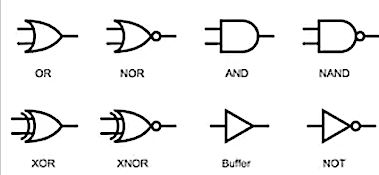Future prospects
In our project, the threshold is fixed because we only change the condition of α to linker. However, if we change other parameters such as drain α, the value of threshold must change in theory. By examining whether beads aggregate or not when changing the concentration of drain α and α to linker, we can make a two-dimensional threshold graph with each concentration as an axis. From this graph, the region of DNA concentration where beads aggregate and the region where aggregation does not occur will be clearly seen. Therefore, by experimenting whether the aggregation of beads is caused by tuning the concentration of α to linker and tuning the concentration of drain α, in the final stage, the graph can be obtained. It will be possible to perform a complex imitation corresponding to a more realistic blood coagulation by using the graph which reflects the change of threshold.

Fig.1 The rough sketch of two-dimentional threshold graph
Future applications
The system "Bit Clot" that we have developed has various potential applications. Four examples are described below.
1.
As mentioned in the background, until now, hemophilia, which makes it difficult to stop hemostasis, has basically been treated with coping therapy which simply adds a deficient coagulation factor and thus relies on the immune cascade. On the other hand, Bit Clot, which we have now developed, is novel in that it acts independently on the immune cascade because it uses a physical method of blocking the wound by causing aggregation of beads using DNA. This new method will provide hints to medical researchers for creating new treatments.
2.
Non-linear changes, the changes which result in beads aggregating or not at a certain threshold can be used as a “switch”. For example, we can think of this as creating a filter that allows beads that are not aggregated or beads with a low degree of aggregation to pass through, and conversely prevents beads with aggregated size above a certain level to pass through. The filter is clogged with aggregated beads. As a result, digital electricity signals can be transmitted by making it difficult for electricity to pass through a clogged filter.
A system where a non-linear response is useful as a switch could also be applied to microfluidic devices. A microfluidic device is a generic term for devices that use microfabrication technology such as MEMS technology to create micro channels and reaction vessels and apply them to bioresearch and chemical engineering, and in fact, many fluidic devices which imitate blood vessels have been developed. However, blood coagulation with microfluidic devices has not often been reproduced, and the importance of thresholds for actual blood coagulation in vivo has rarely been taken into account. Bit Clot, which uses DNA PEN toolbox and drainα, brings some breakthroughs to MEMS.

Fig.2 The filter in microdevice as a usage of switch
3.
In this system, a macro phenomenon, aggregation, occurs from a minute amount of DNA, such as 100 pM. Apart from blood clotting, Bit Clot can be applied as a sensor for detecting minute amounts of DNA. We can come up with an application example in eDNA. eDNA is focused on as an index of the soil and water environment. In previous research, the pollutant resolution of soil microorganisms was analyzed with plasmid, but Bit Clot is useful for low concentrations of DNA fragments because of its high sensitivity.
4.
This time, we look at this newly developed system from a different perspective. When one bead is regarded as a DNA robot, the aggregation of beads can be seen as miniature swarm robot. Recently, swarm robotics has been gathering attention because swarm robots are more flexible and autonomous than single robots in many cases. Swarm robots can be useful in many fields, and one of these fields is medicine. By introducing the robots into our body, many kinds of data can be taken, and swarm robots can assist in fertilization and delivering drugs. It is difficult to construct nano-scale electrical robots which are needed for application into medicine, so using DNA nanotechnology is a good solution. Additionally, the robots should provide the needed complexity for responding while functioning in vivo. From these viewpoints, our research is important in swarm robotics. In addition, as mentioned in the third application, when Bit Clot can be used to detect low concentrations of DNA, it may be possible to recognize multiple gene regions by combining this with AND Gate. Briefly speaking, we can create a system where beads aggregate only when DNA from two gene regions is present. We have been experimenting with some of this, so more details can be seen at the following link (click the button "Logic gate"):

Fig.3 Various types of logic gate
Reference
[1] M. I. Bogorad, et al., “Review: in vitro microvessel models”, Lab Chip, 2015, 15, 4242-4255.
[2] Wenfu Zheng , Bo Jiang , Dong Wang , Wei Zhang , Zhuo Wang and Xingyu Jiang, "A microfluidic flow-stretch chip for investigating blood vessel biomechanics", DOI: 10.1039/C2LC40173H (Paper) Lab Chip, 2012, 12, 3441-3450
[3] Ficetola, G. F., Miaud, C., Pompanon, F., Taberlet, P., (2008) “Species detection using environmental DNA from water samples”. Biology Letters 4 (4): 423–425. doi:10.1098/rsbl.2008.0118
[4] Lee, SW., Won, K., Lim, H.K. et al., "Screening for novel lipolytic enzymes from uncultured soil microorganisms", Appl Microbiol Biotechnol (2004) 65: 720. https://doi.org/10.1007/s00253-004-1722-3
[5] Takarada, T., Maeda, M. “Gold Nanoparticles Modified with Double-stranded DNA for Analytical Applications” BUNSEKI KAGAKU, 64, 1, 15-23 (2015) (Japanese) https://www.jstage.jst.go.jp/article/bunsekikagaku/64/1/64_15/_pdf
[6] Rubenstein, M., Cornejo, A., Nagpal, R. “Programmable self-assembly in a thousand-robot swarm” Science, 345, 6198, 795-799 (2014) https://science.sciencemag.org/content/345/6198/795
[7] Ania Servant, et al. “Controlled In Vivo Swimming of a Swarm of Bacteria‐Like Microrobotic Flagella” Advanced Materials, 27, 19, 2981-2988 (2015) https://onlinelibrary.wiley.com/doi/full/10.1002/adma.201404444